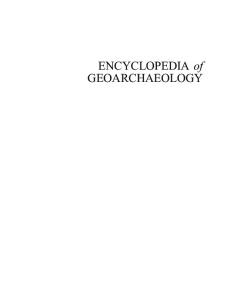The Microstructure and Electrical Resistivity of Cluster-Based Thin Films
- PDF / 1,810,392 Bytes
- 5 Pages / 414.72 x 648 pts Page_size
- 71 Downloads / 318 Views
47907
ABSTRACT Cluster-assembled thin metal films exhibit properties which are different from those of films obtained by conventional atomic-deposition. We present TEM data on the evolution of 2-D microstructure and SFM data on the evolution of 3-D microstructure in thin films grown by vacuum deposition of preformed silver clusters and of preformed acetylene-silver clusters on flat SiO2, and mica. Electrical resistivity measurements of cluster-based Ag and Ag/C2H2 films deposited on glass substrates with nominal film thicknesses of 5 nm - 50 nm are also presented and discussed. INTRODUCTION Metal clusters with diameters in the nanometer size range can have interesting properties that are very different from those of the bulk material. [1] One of these is the ability of nanoscale metal clusters to bond on contact at room temperature. The use of small metal clusters instead of atoms to deposit thin metal films may lead to interesting new film properties. Carbon-metal composite films are candidate materials for novel electrical, optical and magnetic applications. [2-6] These films are made conventionally by combining metal evaporation or sputtering with plasma polymerization of a hydrocarbon gas. Earlier work by Ansari [7], showed that the addition of a reactive gas (acetylene) into the quench stream of a gas-aggregation cluster source can lead to the production of novel metal/polymer composite clusters. Thin films formed by depositing silver/acetylene clusters on glass substrates were found to conduct at lower film thicknesses than for pure silver cluster films. It was proposed that the acetylene produced a protective polymer layer around the silver clusters, and possibly formed conducting polyacetylene. In this work, growth and electrical resistivity of silver and of silver/acetylene CBD films are investigated. EXPERIMENTAL The clusters in this work were produced using a Multiple Expansion Cluster Source (MECS). [8] The MECS can produce metal clusters of controlled size, from 1 to 20 nm in diameter, and of controlled composition. The design and operation of the MECS is fully described elsewhere. [8,9] Only a brief overview of the principles of operation will be presented here. The MECS is a gas-aggregation cluster source in which metal vapor entrained in a hot inert gas stream is expanded through a small hole in a resistively heated carbon oven held at 100-2(X) torr. This superheated stream is rapidly cooled by turbulent mixing with a cold quench gas stream, and the supersaturated mixture is further expanded into a tubular fast-flow reactor held at 300 K and 20-40 torr. Metal clusters form in the reactor by accretion of single metal atoms onto metal dimers present in the original vapor coming from the oven. A small portion of the cluster aerosol is sampled through a capillary at the end of the reactor and is expanded into a vacuum chamber maintained at - 1 x 10- torr. The resulting cluster beam is directed onto substrate samples placed in the vacuum chamber to produce Cluster Beam Deposition (CBD) films. Conditions
Data Loading...








